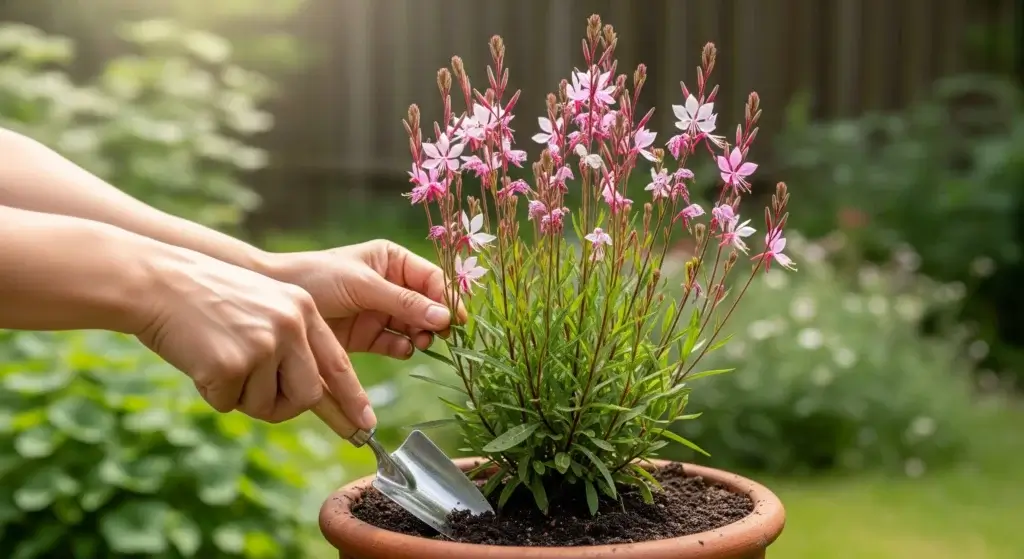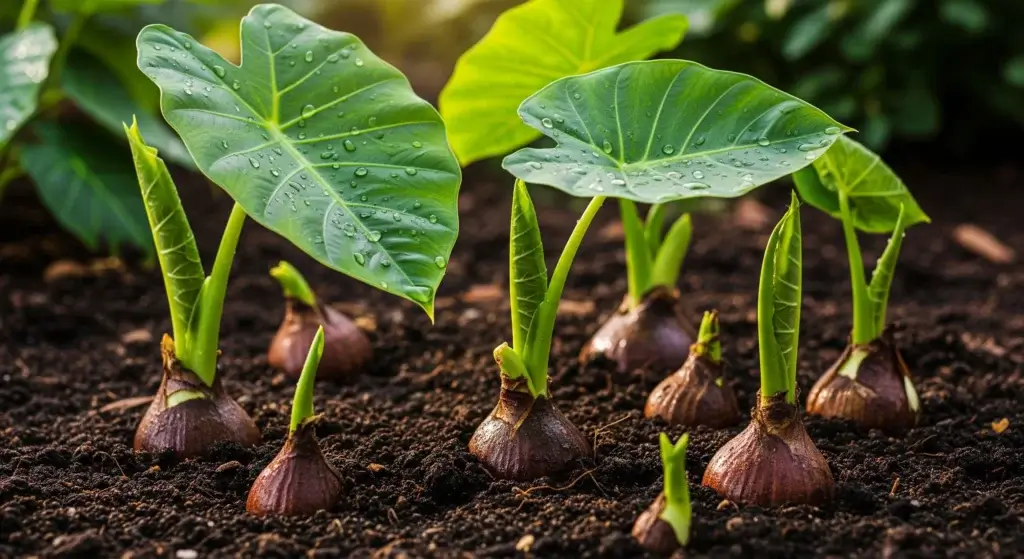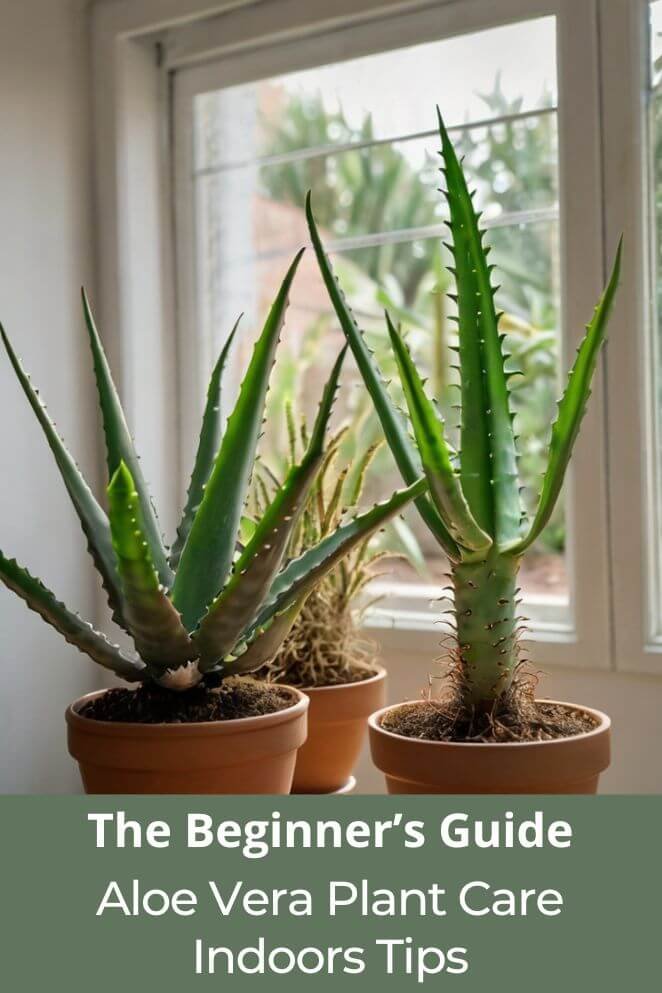
Aloe vera isn’t just a cute plant—it’s the MVP of your indoor jungle.
Heals burns, looks great, and barely asks for anything.
It’s like the Keanu Reeves of houseplants: chill, low-maintenance, and secretly amazing.
Whether you’re new to plant life or already talk to your monstera, aloe is easy to grow—if you know the basics.
That means giving it enough sun, not drowning it (seriously, don’t), knowing when to repot, and skipping common mistakes.
In this guide, we’ll break it all down—fast, fun, and fluff-free. Let’s get your aloe thriving, not just surviving.
Why Grow Aloe Vera Indoors?
Before we jump into aloe TLC, let’s talk about why this spiky little superstar deserves a spot in your indoor garden.
It basically takes care of itself.
Aloe is the ultimate low-maintenance roomie.
No daily watering, no drama.
It thrives on a “set it and forget it” schedule. Even if you ghost it for a week, it’ll be fine. (Try that with a fiddle leaf fig.)
It’s your green medicine cabinet.
Got a burn from your straightener or a mystery rash from trying a new serum?
Aloe’s gel is basically nature’s version of Neosporin—with a spa day twist. Just snip a leaf and apply. Boom: instant soothing.
- Read also: Green Secret: Snake Plant Care Indoor for Thriving Bliss
- Read also: The Essential Guide to Thriving Spider Plant Care Indoors
It freshens your space.
Yup, aloe pulls double duty by helping filter out indoor air nasties like formaldehyde and benzene.
It’s like a tiny green air purifier—but way cuter.
It’s got style.
Aloe’s geometric, sculptural look fits in everywhere.
Minimalist loft? Boho bedroom? Tiny apartment window?
Aloe brings chill desert vibes with a side of sleek.
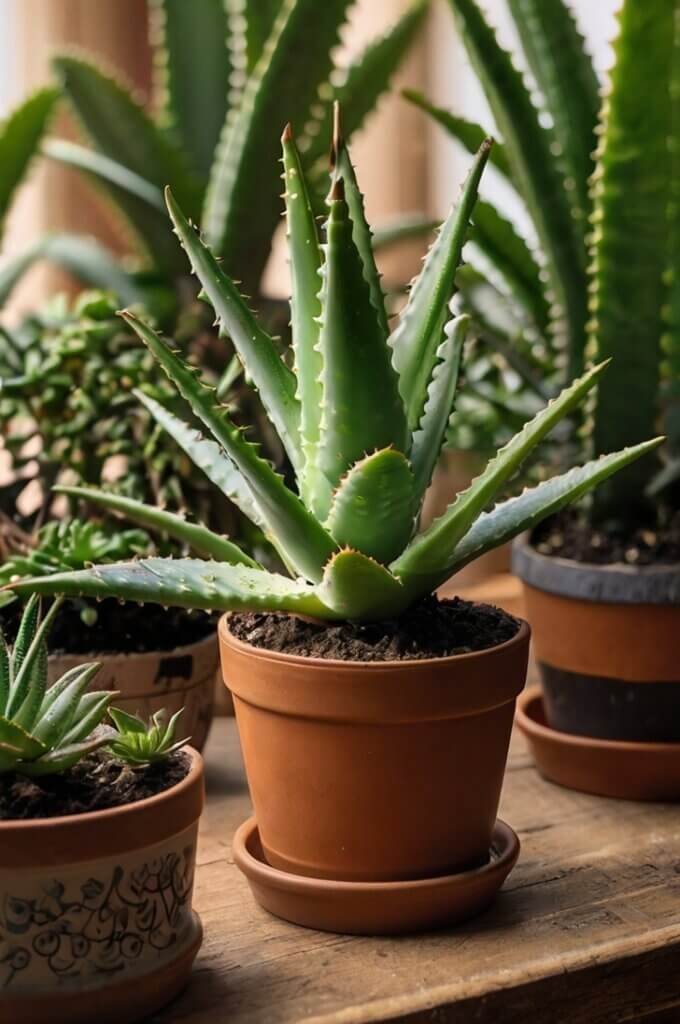
What Your Aloe Needs to Be Happy Inside
Aloe might be chill, but it’s got standards.
Here’s the VIP treatment it deserves:
Sunshine time
Aloe’s basically a sun worshipper.
Think of it as a tiny plant version of someone who always books the window seat.
Place it near a bright, sunny window—south or west-facing is best.
No direct sun? It might get leggy or pale, like it hasn’t seen daylight since winter break.
Pro tip: If it starts stretching like it’s trying to escape the pot, it’s begging for more light.
Good drink (watering)
Aloe hates soggy roots.
Water it like a cactus, not a thirsty houseplant.
Let the soil dry out completely between waterings—like desert dry.
Then give it a deep drink and let the excess drain out.
Overwatering = sad, squishy leaves. Underwatering = dramatic droop.
The sweet spot? Every 2–3 weeks, depending on season and light.
Nice home (soil and pot)
Aloe likes its space dry and breathable. Use cactus or succulent soil—something fast-draining.
And the pot? Always go for one with drainage holes. Terracotta is a classic—it breathes, drains, and looks effortlessly cool.
No drainage = root rot = aloe ghosting you forever.
Little Things That Make a Big Difference
Aloe’s low-maintenance, sure—but these tiny tweaks can take it from “surviving” to “serving full glow-up energy.” Let’s get into it:
Fresh air
Aloe’s not a diva, but it does like good air circulation.
Think light breeze, not arctic blast.
Crack a window when you can, or let it chill near a fan now and then.
Why? Stagnant air = moisture buildup = fungal drama.
And no one has time for that.
Keep it clean
Dust happens—even to desert queens.
Wipe the leaves gently with a damp cloth now and then to help aloe soak up that sunlight like it’s sunbathing in Malibu.
Bonus: clean leaves = better photosynthesis = happier plant.
Moving around
Rotate your aloe every week or so to keep it growing straight and balanced.
Otherwise, it’ll lean like it’s trying to photobomb your Zoom calls.
Sunlight hits one side harder? Give it a little spin—equal light = even growth.
Plant food? (fertilizer)
Aloe’s not a heavy eater. It’s more of a light snacker.
Feed it once in spring and again in summer with diluted cactus fertilizer—half strength, max.
Skip the winter buffet. It’s on rest mode, like it’s hibernating in cozy sweats.
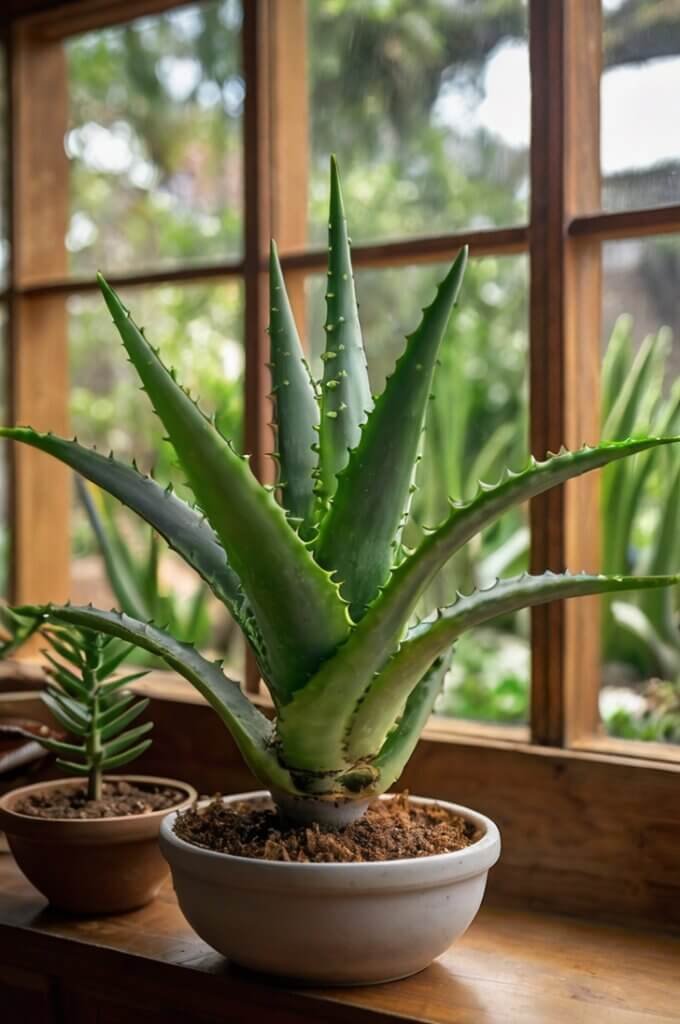
Common Problems & How to Fix Them
Even the toughest plants have their moments.
If your aloe’s not looking its best, here’s how to play detective and get it back on track:
| Problem | Symptoms | Solution |
| Overwatering | Mushy leaves, brown roots |
Cut back watering, repot with dry soil
|
| Underwatering | Wrinkled or curled leaves |
Water thoroughly and consistently
|
| Too much sun | Sunburn spots on leaves |
Move to filtered light or indirect sunlight
|
| Pests | Small bugs, sticky residue |
Use neem oil or insecticidal soap
|
Propagating Aloe Vera at Home
Want your aloe army to grow? Propagating aloe is a breeze, and it’s a total power move.
You can easily grow new plants from the “pups” (baby offshoots) that sprout at the base of your aloe mama.
Here’s how to propagate like a pro:
- Gently remove the mother plant from its pot. You’re not breaking up with it, just giving it a little space to share the love.
- Separate the pups—make sure they have their own little roots attached. It’s like giving them a head start in life. Think of it as plant adoption.
- Let the pups dry for 1–2 days. You want them to form calluses, kind of like letting a scraped knee heal before putting on a bandage.
- Plant those little guys in small pots with succulent soil. They’re starting a new chapter now—let them feel special.
- Water lightly after a week and give them indirect sunlight. No need to rush things—let them adjust and grow at their own pace.
Aloe Vera Indoor Care Checklist
Want your aloe to thrive like it’s living its best life on a tropical beach?
Here’s the ultimate guide to keeping your indoor aloe happy, healthy, and thriving:
Bright, indirect light (6–8 hours/day)
Aloe’s a sun worshipper, but it doesn’t want to burn in the spotlight.
Think of it as a “daylight in the shade” kind of plant.
Place it near a bright window—but don’t let it bake.
Water every 2–3 weeks (less in winter)
Aloe is the minimalist of watering.
Let the soil dry out completely before you give it a drink—like a cactus, but cooler.
In winter, just take it easy—aloe’s on vacation mode.
Well-draining pot and soil
Aloe’s roots are picky; they don’t want to sit in soggy soil.
Opt for a pot with drainage holes and fast-draining soil.
Think of it as giving your aloe the VIP treatment.
Avoid misting or excess humidity
Aloe’s not a tropical rainforest plant.
Skip the misting, and don’t go overboard with the humidity—it’s a desert diva, not a waterlogged diva.
Keep in warm spots, away from cold drafts
No one likes cold drafts—especially aloe. Keep it cozy in spots where the temperature stays between 60–85°F (16–29°C).
Aloe hates chilly surprises.
Watch for pups and pests
Aloe’s got babies!
Look for little pups sprouting at the base—they’re ready for their own pots.
Also, check for pests like aphids or mealybugs.
If you spot one, get them out of there ASAP—no freeloaders allowed.
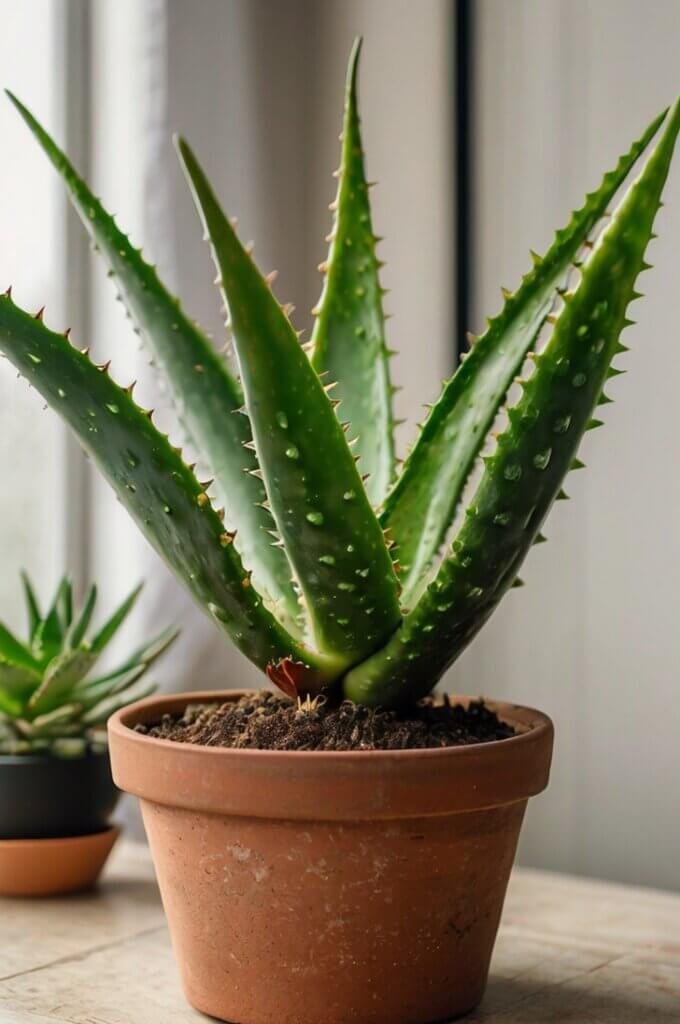
- Read also: Tips for Thriving Foliage: A Guide to Indoor Umbrella Plant Care
- Read also: Comprehensive Care Tips Hawaiian Spider Plant Care
Conclusion: A Little Aloe Goes a Long Way
Aloe vera is basically the ride-or-die of indoor plants—super chill, quietly powerful, and always there when you need it.
Give it bright light, occasional watering, and a comfy pot, and it’ll thrive all year like it’s living in a spa.
The best part? It’s more than just eye candy.
This plant heals burns, freshens the air, and looks great doing it.
Aloe’s not just a plant—it’s a lifestyle.
So if you’re ready to level up your indoor garden game (without the high-maintenance drama), aloe vera’s the perfect place to start.
Green thumb or not, you’ve got this.


